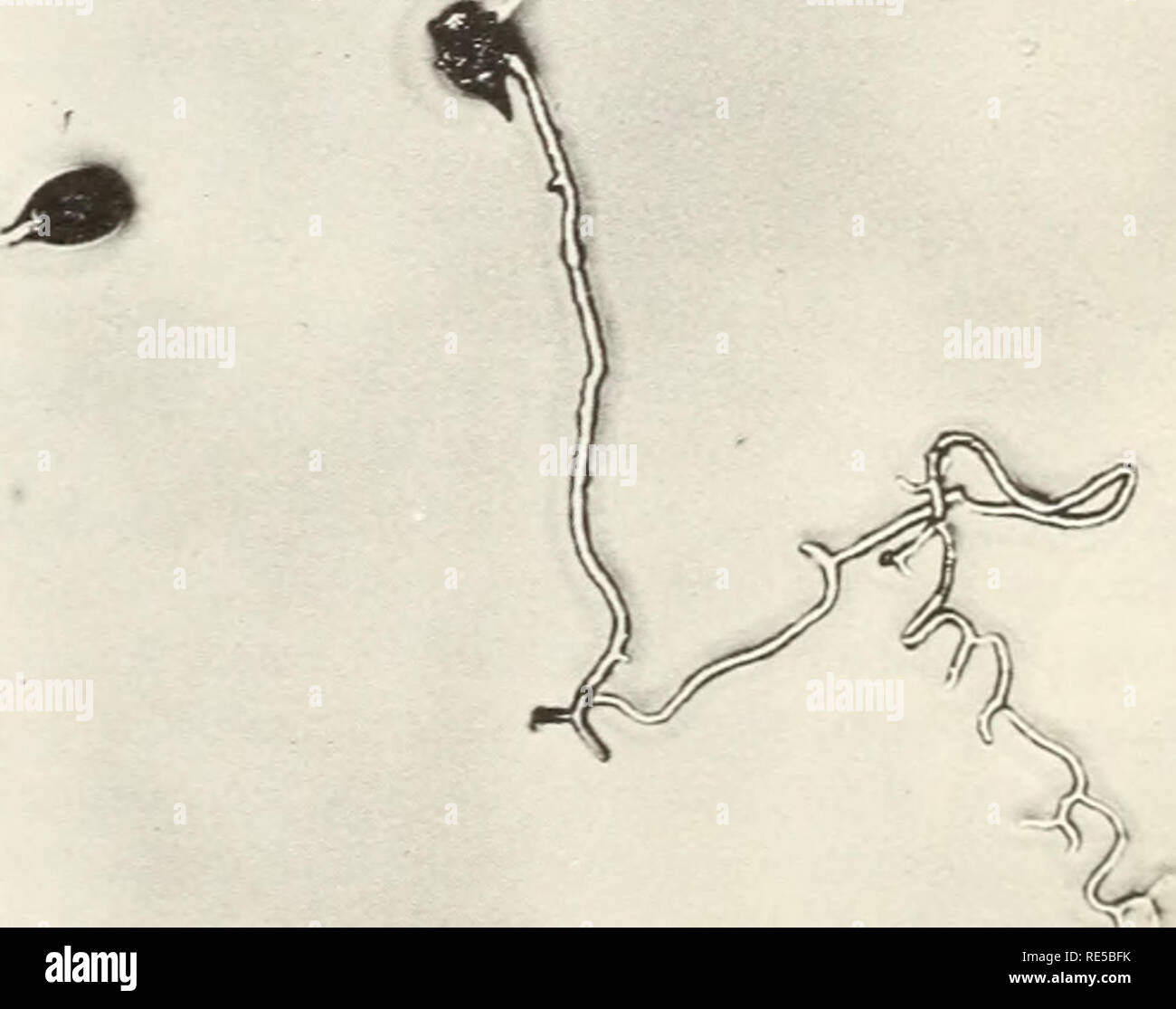. Cronartium comandrae in the Rocky Mountain States. Cronartium comandrae Rocky Mountains Region; Fungi Rocky Mountains Region. SPORE VIABILITY AND GERMINATION To explore the influence of environmental conditions on spores during dissemination and germi- nation, many experiments were run under controlled and monitored environmental conditions. Experi- ments were made to investigate all spore stages involved in infection of comandra and pine, that is (1) aeciospores on pine, with ability to infect comandra; (2) urediniospores on comandra, with abil- ity to reinfect comandra plants; (3) teliospo

Image details
Contributor:
The Book Worm / Alamy Stock PhotoImage ID:
RE5BFKFile size:
7.2 MB (152.1 KB Compressed download)Releases:
Model - no | Property - noDo I need a release?Dimensions:
1780 x 1404 px | 30.1 x 23.8 cm | 11.9 x 9.4 inches | 150dpiMore information:
This image is a public domain image, which means either that copyright has expired in the image or the copyright holder has waived their copyright. Alamy charges you a fee for access to the high resolution copy of the image.
This image could have imperfections as it’s either historical or reportage.
. Cronartium comandrae in the Rocky Mountain States. Cronartium comandrae Rocky Mountains Region; Fungi Rocky Mountains Region. SPORE VIABILITY AND GERMINATION To explore the influence of environmental conditions on spores during dissemination and germi- nation, many experiments were run under controlled and monitored environmental conditions. Experi- ments were made to investigate all spore stages involved in infection of comandra and pine, that is (1) aeciospores on pine, with ability to infect comandra; (2) urediniospores on comandra, with abil- ity to reinfect comandra plants; (3) teliospores in teha on comandra, which form basidiospores; and (4) basidiospores which may infect pines. AECIOSPORES Annual crops of aeciospores are produced in aecia from perennial mycelium in live bark of cankers of pines. At maturity, aecial peridia rupture and expose dark-orange masses of many thousands of teardrop-shaped aeciospores. These spores are dis- seminated by wind and function as the primary inoculum for infection of comandra. Effects of Temperature on Germination Mer/20£^.-Aeciospores collected in June from recently ruptured aecia were tested for their ability to germinate at several temperatures. Six samples repre- senting Cache, Targhee, Teton, and Wasatch National Forests were tested. Spores were collected with a small cyclone separator, stored in gelatin capsules, and kept cool until tested within a few days. Collodion membranes floating on distilled water in petri plates were used as the substrate for germi- nation. These membranes were made by pressing large drops of collodion between two glass slides, sepa- rating the slides, air-drying the exposed surfaces, and finally floating the membranes off onto water. Such membranes were uniformly a few microns thick and proved excellent for aeciospore germination. Small masses of spores were blown through a cyclone sepa- rator into a 40-cm.-high settling tower where spores fell onto the test membranes. Germination was sim